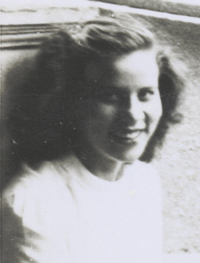Historically Speaking The story of us, it's our history.
Storytelling is the story of us. It's our history.
Each of us has a story to tell–even tall tales–about past events and people to share with current generation. Hopefully, these stories will be retold to the next generation.
How do you develop and craft your story?
When telling a historical story, narrow it down to one event or person, limiting the number of characters.
Develop the plot, setting, characters and action. Give life to your characters. Describe them–be generous with your description. Add a limited number of supporting characters to your story to make it less confusing for your audience.
Unlike reading a historical story in a book, an oral history can charm and/or captivate your audience. Storytellers have been (still are) tellers of the news, upholders of 'morals', entertainers and carriers of culture.
Define Your Story
Research and write your story narrowing your focus to one event or character as described above. Write is down. Don't worry about length or structure, right now. After you've written your story, read it taking special note of the story hiding underneath all the information and data. Ask yourself, "where is the human side?"
The Rewrite.
Once you've identified the 'human side' of your story, begin reframing the story to move past merely documenting someone's life story. Limit yourself to ONE incident or significant event. Make it fun, fascinating–invoke empathy–for your audience.
Edit.
Cut. Cut. Cut. Long or complicated stories do NOT inspire audiences.The goal is to make the story understandable and entertaining.
Cut More.
Concentrate on the main point or plot of your story, eliminate ANYTHING that doesn't enhance or contribute to the plot of your story. Use a brief introduction to provide the audience with a synopsis or point of reference before you begin to tell your story.
Get To The Point.
- Honor your time and your audience's time. Typically 5-7 minutes for short story and 18-20 minutes for in-depth story.
- Eliminate lengthy description.
- Cut complete scenes if it shifts the story to another direction. Maintain unity of plot.
- Leave out minor characters or subplots–focus on key characters and/or events.
Put It To Work.
Read your story out loud. Carefully. Decide what to keep–retaining only the essentials of the key (plot) points. Drop the other 'stuff'. Read it out loud again. Bring it all together with vocal variety and body language. Transitions like these add emphasis, create pauses and actions. Record your story or read it for a friend.
- Does it make sense?
- Does the story remain true to the event or person?
- What is the plot/purpose of the story?
- Does it fit your allotted time?
- Are the characters well developed?
- Does it inspire or invoke emotion?
Tip: Use descriptions and dialogue to make the story emotionally tangible.
Using Visuals.
Now that your story is written and edited–focusing on the plot–now is the time to review your visual assets. Many of the same principles used for developing the story apply when choosing visuals.
Have you every been to a PechaKucha? In this 20X20 presentation, 20 slides x 20 second each which advance automatically, the speaker typically (attempts) to sync the verbal with each slide. It is rarely accomplished, thus hilarity ensues. The most successful are those that autoplay the visuals without being restricted to a script for each slide.
tip: visuals should enhance your story, the audience should be focus on you...the storyteller.
Be a Ruthless Editor.
Review your images and documents, during the first round pull out items that you believe connect with your story. Edit into three piles: yes, no and maybe. Next, review the "yes" pile using the same method, this time ask yourself: Does this connect with the story? The character? The event? See out images with quality (not necessarily physical quality, but the image itself).
Often we choose images based on our own emotions, think like an editor.
Every image selected must have purpose to the theme. Image editing and sequencing is an art. Intuition plays a huge role and powerful role, however, you must learn to remove your own emotion(s) from the process. Select images that express support the main plat or character.
Bring It To Life.
The investment of your time into editing the story and selecting images will be time well-spent when you bring it all together. During practice sessions, intuition become your friend. You'll recognize when something isn't working, where to add pauses, changes in body language, etc. There are numerous storytelling events everywhere, many offer rehearsal beforehand. Toastmasters' clubs are another resource to hone your storytelling (speaking) skills.
Practice, baby! It's all about practice. Not memorized, but part of you, naturally. Your story comes from your heart and delivered with passion. This is the secret.
How can I help you "historically speaking"? I've worked with others to develop a speech and produce books that tell a story–all with a historical foundation.
